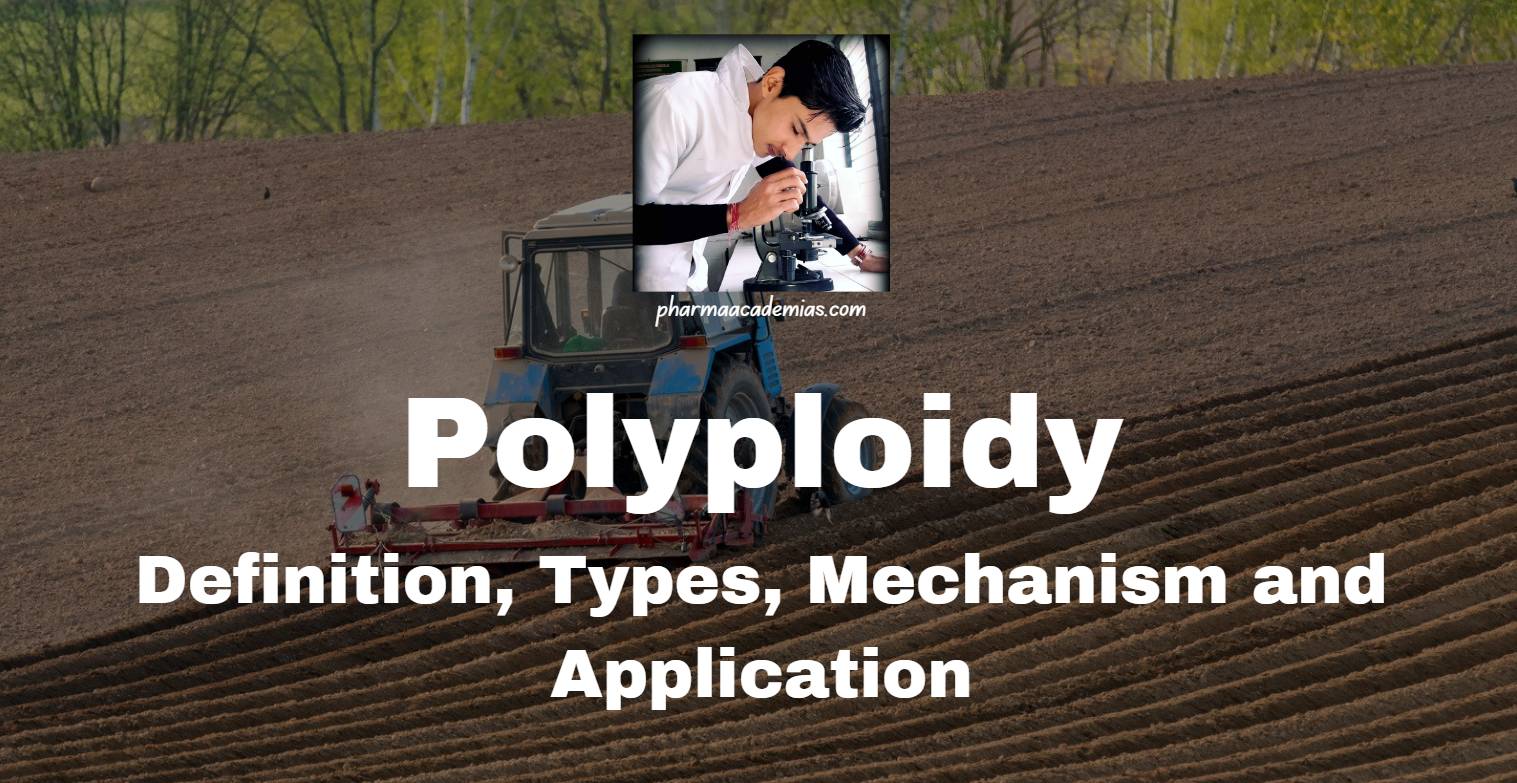Polyploidy is a genetic condition characterized by the presence of more than two complete sets of chromosomes in an organism’s cells. This phenomenon can occur naturally or be induced artificially and has significant implications for the genetics, evolution, and ecology of organisms. Here’s a detailed note on polyploidy:
1. Types of Polyploidy
Autopolyploidy: Autopolyploidy arises from the duplication of the entire chromosome set within a single species. It typically occurs through the failure of chromosome segregation during mitosis or meiosis, leading to the formation of diploid, triploid, tetraploid, or higher-order polyploid individuals.
Allopolyploidy: Allopolyploidy results from the hybridization between two or more closely related species followed by chromosome doubling. The resulting hybrid possesses two or more sets of chromosomes derived from different parental species. Allopolyploids often exhibit increased genetic diversity and may display hybrid vigor or heterosis.

2. Mechanisms of Polyploid Formation
Endoreduplication: Endoreduplication is the process by which cells undergo DNA replication without subsequent cell division, leading to an increase in chromosome number within a single nucleus. Endoreduplication can occur during development or in response to environmental stimuli, resulting in polyploid cells or tissues.
Gamete Fusion: Polyploidy can arise through the fusion of unreduced gametes during fertilization, resulting in zygotes with double or multiple chromosome sets. This mechanism is common in both autopolyploid and allopolyploid formation and can occur spontaneously or be induced experimentally.
Somatic Cell Fusion: Somatic cell fusion can lead to the formation of polyploid cells or organisms by merging two or more somatic cells with different chromosome complements. This process is often used in plant breeding and biotechnology to create novel polyploid hybrids with desirable traits.
3. Consequences of Polyploidy
Increased Genetic Variation: Polyploidy leads to an increase in genetic diversity within populations due to the presence of multiple copies of genes and alleles. This can enhance adaptability to changing environmental conditions and promote evolutionary innovation.
Altered Gene Expression: Polyploidy can influence gene expression patterns through changes in gene dosage, epigenetic modifications, and regulatory interactions. Alterations in gene expression can result in phenotypic variations such as changes in morphology, physiology, and developmental processes.
Reproductive Isolation: Polyploidy can contribute to reproductive isolation and speciation by disrupting genetic compatibility and reproductive barriers between polyploid individuals and their diploid progenitors. This can lead to the formation of new polyploid species through sympatric or allopatric speciation.
Hybrid Vigor: Allopolyploids often exhibit hybrid vigor or heterosis, characterized by increased growth, fertility, and adaptability compared to their diploid progenitors. This phenomenon results from the combination of diverse gene pools and the masking of deleterious alleles.
Genomic Instability: Polyploidy can induce genomic instability and chromosomal rearrangements due to the presence of redundant chromosome copies and the need to coordinate gene expression and chromosome segregation. This may lead to chromosomal aberrations, gene loss, or genome restructuring over evolutionary time.
Evolutionary Success: Polyploidy is associated with evolutionary success and diversification in plants, contributing to the origin of many extant plant species and lineages. Polyploids often exhibit broader ecological tolerances, higher environmental plasticity, and enhanced reproductive fitness compared to diploid relatives.
4. Applications of Polyploidy
Plant Breeding: Polyploidy is widely exploited in plant breeding to generate new crop varieties with improved agronomic traits such as yield, quality, disease resistance, and environmental adaptation. Polyploid crops include wheat, cotton, potato, and sugarcane.
Ornamental Horticulture: Polyploidy is used in ornamental horticulture to produce new flower colors, shapes, and sizes, as well as to enhance vigor and flower longevity. Polyploid ornamental plants include roses, lilies, and daisies.
Genetic Engineering: Polyploidy can facilitate genetic engineering and genome editing techniques by providing redundant gene copies for targeted modifications. Polyploid organisms may exhibit increased tolerance to genetic perturbations and enhanced stability of transgene expression.
Conservation Biology: Polyploidy can play a role in conservation biology by increasing the genetic diversity and adaptive potential of endangered or threatened species. Polyploid populations may possess greater resilience to habitat degradation, climate change, and other environmental stressors.
In conclusion, polyploidy is a widespread phenomenon with diverse consequences for the genetics, evolution, and ecology of organisms. Understanding the mechanisms and implications of polyploidy is essential for elucidating evolutionary processes, improving crop productivity, and conserving biodiversity in natural and managed ecosystems.

